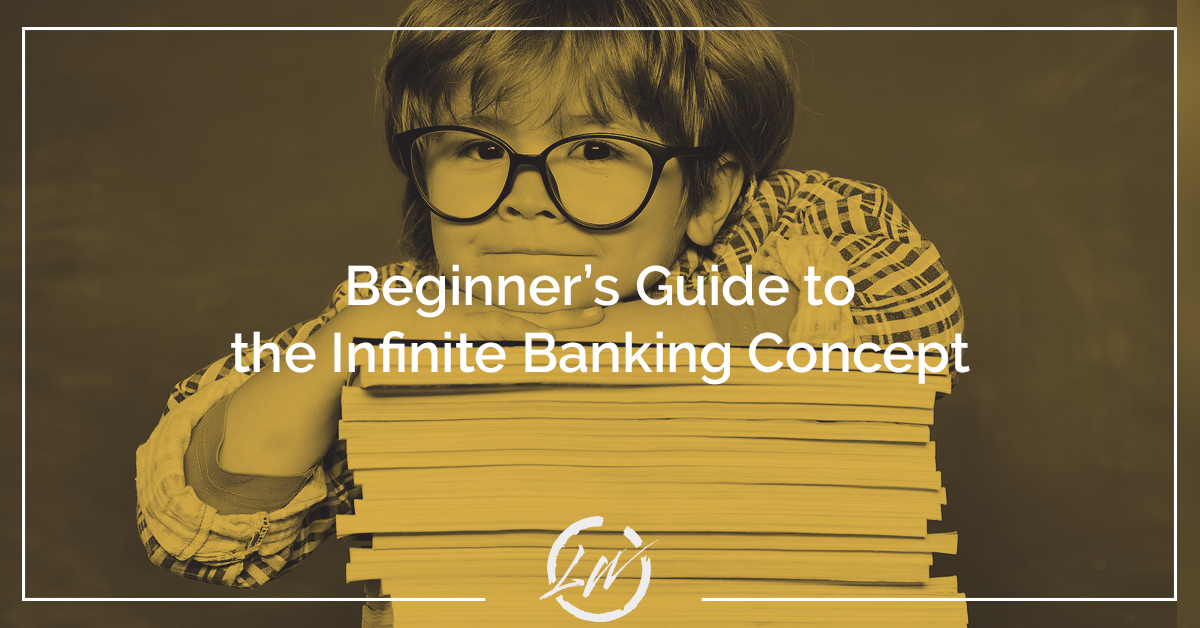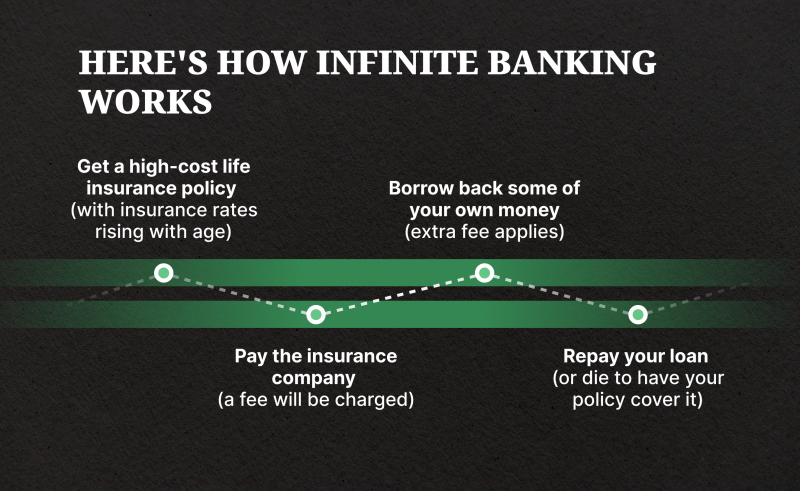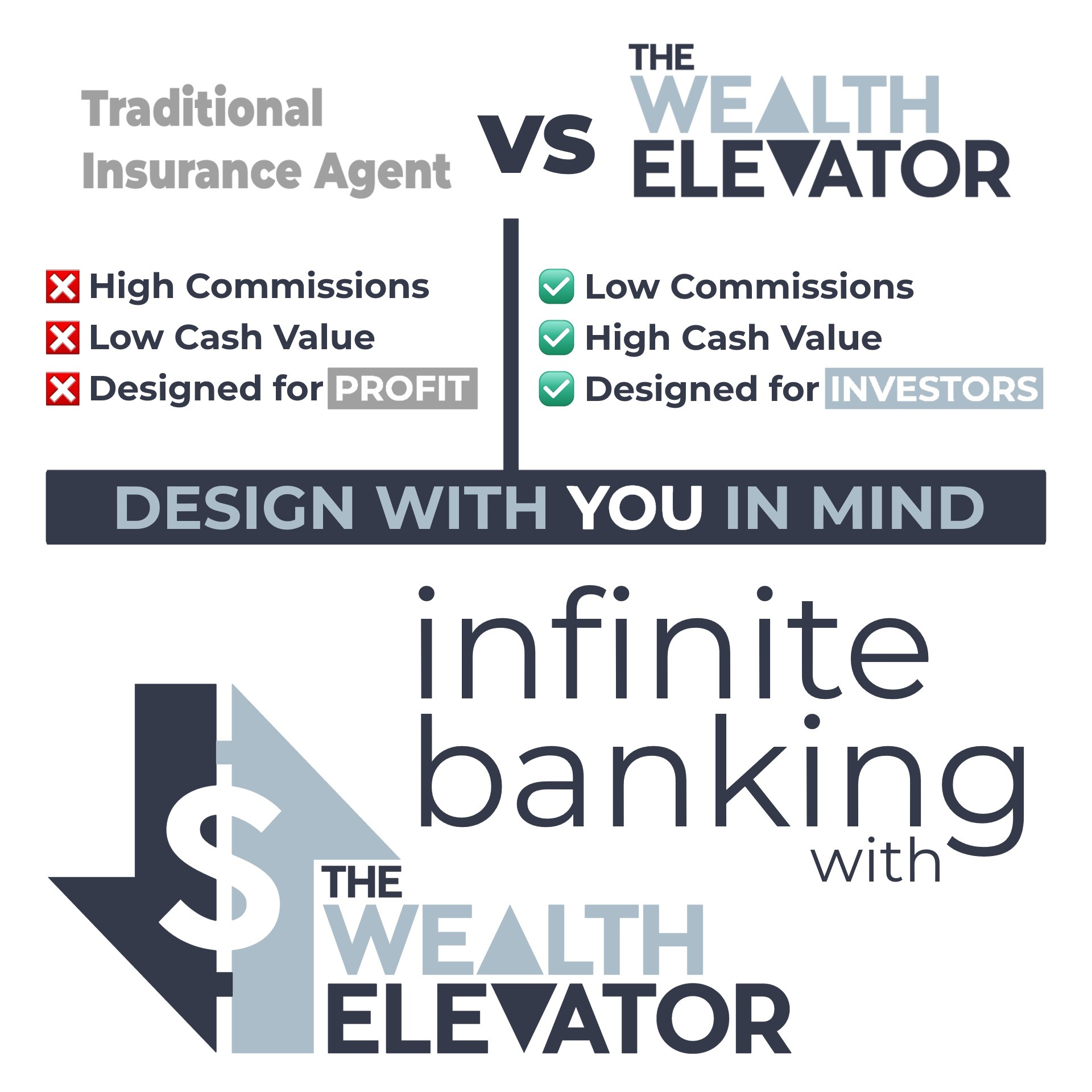All Categories
Featured
Table of Contents
The downsides of boundless banking are commonly forgotten or otherwise mentioned in any way (much of the information offered regarding this concept is from insurance coverage representatives, which may be a little biased). Just the cash worth is growing at the reward rate. You also need to pay for the expense of insurance, costs, and expenses.

Business that provide non-direct acknowledgment lendings might have a reduced reward rate. Your cash is secured into a difficult insurance policy product, and surrender fees generally do not go away up until you've had the policy for 10 to 15 years. Every irreversible life insurance coverage policy is different, yet it's clear somebody's overall return on every dollar invested on an insurance item can not be anywhere close to the reward rate for the policy.
Nash Infinite Banking
To give an extremely fundamental and theoretical instance, let's think a person is able to earn 3%, on standard, for every buck they invest on an "infinite financial" insurance policy product (after all expenses and charges). If we presume those bucks would be subject to 50% in taxes amount to if not in the insurance product, the tax-adjusted price of return could be 4.5%.

We presume higher than typical returns overall life product and a very high tax obligation price on bucks not place into the policy (which makes the insurance product look much better). The reality for several individuals may be worse. This pales in contrast to the lasting return of the S&P 500 of over 10%.
Infinite financial is a wonderful item for representatives that market insurance coverage, however might not be optimum when compared to the less expensive options (with no sales people earning fat compensations). Here's a malfunction of several of the various other purported benefits of infinite banking and why they might not be all they're split up to be.
Infinite Banking Concept Example
At the end of the day you are acquiring an insurance coverage product. We love the security that insurance uses, which can be acquired a lot less expensively from a low-priced term life insurance coverage plan. Overdue lendings from the plan might likewise decrease your fatality benefit, diminishing an additional level of security in the plan.
The concept only functions when you not only pay the significant premiums, but utilize additional cash to acquire paid-up enhancements. The opportunity expense of all of those dollars is incredible incredibly so when you might rather be spending in a Roth Individual Retirement Account, HSA, or 401(k). Even when compared to a taxed financial investment account and even an interest-bearing account, unlimited financial might not supply equivalent returns (contrasted to investing) and similar liquidity, gain access to, and low/no charge framework (contrasted to a high-yield savings account).
With the rise of TikTok as an information-sharing platform, economic advice and strategies have found an unique way of dispersing. One such technique that has been making the rounds is the boundless financial principle, or IBC for short, gathering recommendations from celebs like rap artist Waka Flocka Flame. While the method is currently prominent, its roots trace back to the 1980s when financial expert Nelson Nash presented it to the globe.

Within these plans, the cash value grows based on a rate established by the insurance company. When a significant cash money worth builds up, insurance policy holders can obtain a money worth financing. These fundings differ from standard ones, with life insurance policy offering as collateral, suggesting one could shed their protection if borrowing excessively without sufficient money worth to support the insurance costs.
Bank On Yourself Reviews
And while the appeal of these policies appears, there are innate limitations and threats, necessitating thorough cash value monitoring. The strategy's authenticity isn't black and white. For high-net-worth people or entrepreneur, specifically those using strategies like company-owned life insurance coverage (COLI), the benefits of tax obligation breaks and substance growth can be appealing.
The appeal of limitless financial does not negate its difficulties: Expense: The fundamental demand, a permanent life insurance policy, is costlier than its term counterparts. Eligibility: Not everyone gets entire life insurance coverage because of rigorous underwriting processes that can exclude those with certain health and wellness or way of life conditions. Intricacy and threat: The intricate nature of IBC, combined with its threats, might hinder many, particularly when simpler and less dangerous choices are offered.

Designating around 10% of your month-to-month income to the policy is simply not possible for the majority of people. Component of what you read below is just a reiteration of what has actually currently been claimed over.
Before you get yourself right into a scenario you're not prepared for, know the adhering to initially: Although the principle is typically marketed as such, you're not in fact taking a loan from yourself. If that were the case, you would not have to settle it. Rather, you're obtaining from the insurance coverage company and need to repay it with interest
Unlimited Life Policy
Some social media articles suggest making use of cash money value from whole life insurance to pay down credit card debt. When you pay back the car loan, a section of that passion goes to the insurance coverage firm.
For the first several years, you'll be settling the compensation. This makes it very hard for your plan to gather worth during this time around. Whole life insurance expenses 5 to 15 times extra than term insurance policy. Lots of people just can't afford it. Unless you can pay for to pay a few to several hundred bucks for the following years or even more, IBC will not work for you.
If you call for life insurance policy, below are some useful ideas to consider: Think about term life insurance coverage. Make certain to shop about for the best price.

Limitless banking is not a product and services provided by a specific institution. Boundless banking is a strategy in which you get a life insurance policy plan that collects interest-earning cash value and get financings against it, "obtaining from on your own" as a source of funding. Eventually pay back the car loan and start the cycle all over once more.
Pay policy premiums, a part of which develops cash value. Take a car loan out versus the policy's cash money value, tax-free. If you use this principle as intended, you're taking money out of your life insurance plan to purchase everything you would certainly need for the rest of your life.
Table of Contents
Latest Posts
How To Become My Own Bank
How To Create Your Own Bank
Infinite Banking Center
More
Latest Posts
How To Become My Own Bank
How To Create Your Own Bank
Infinite Banking Center